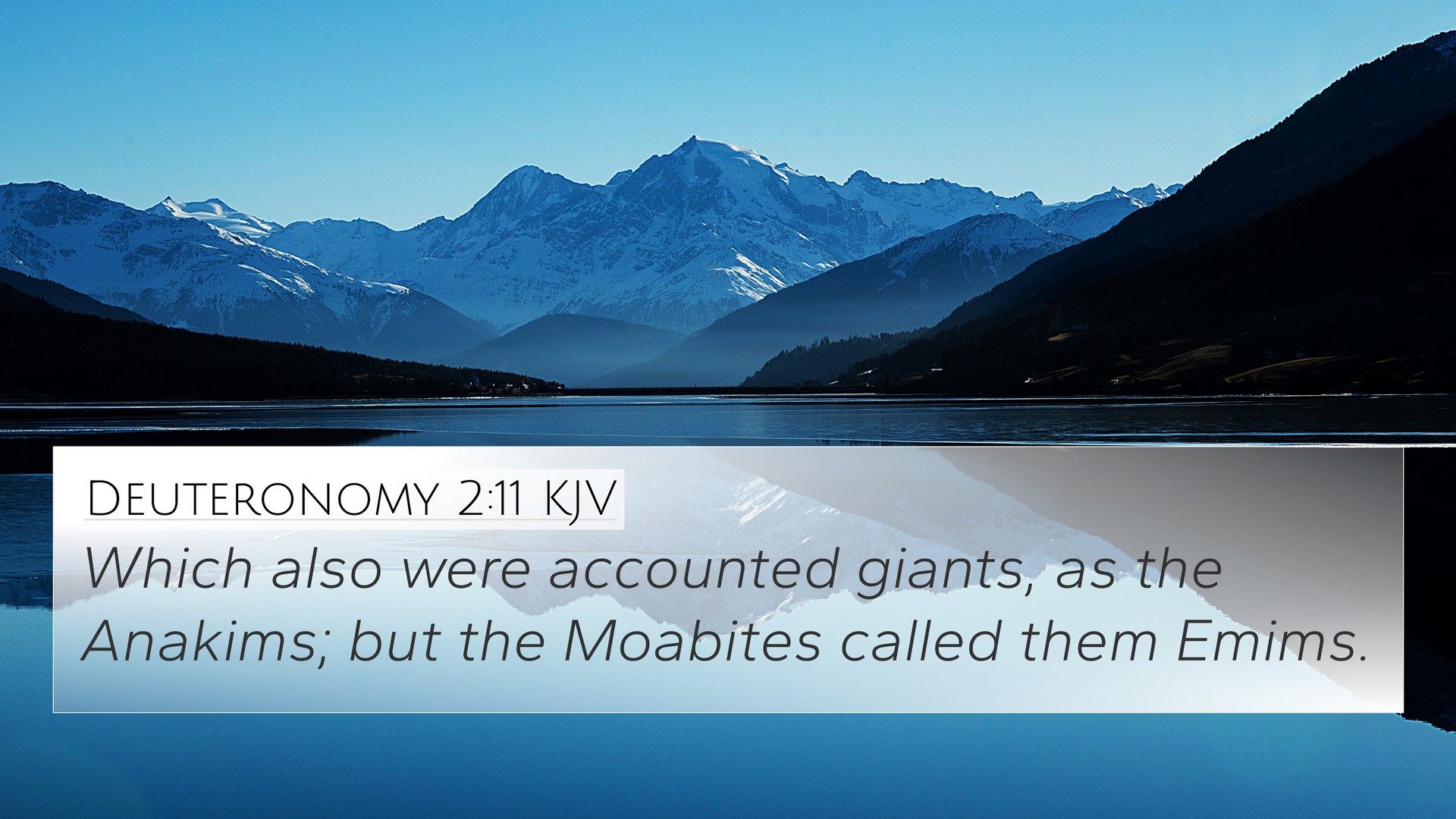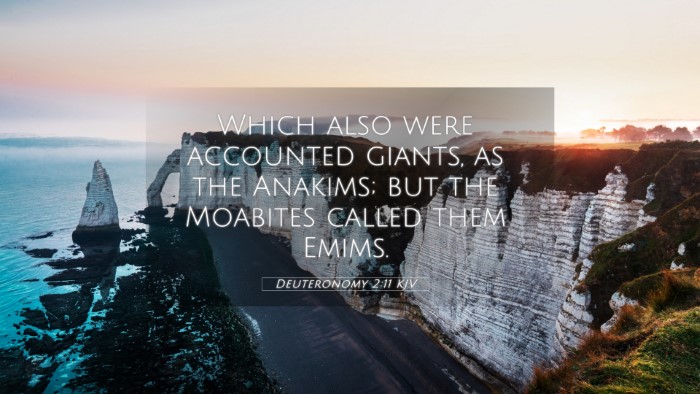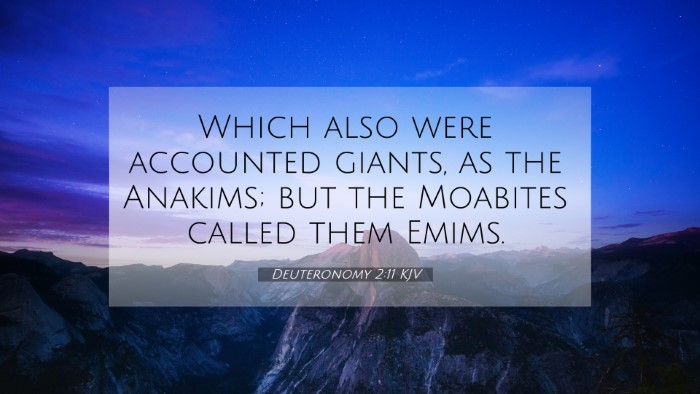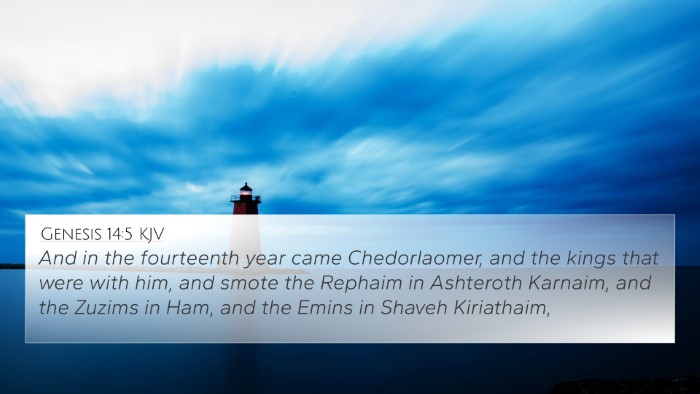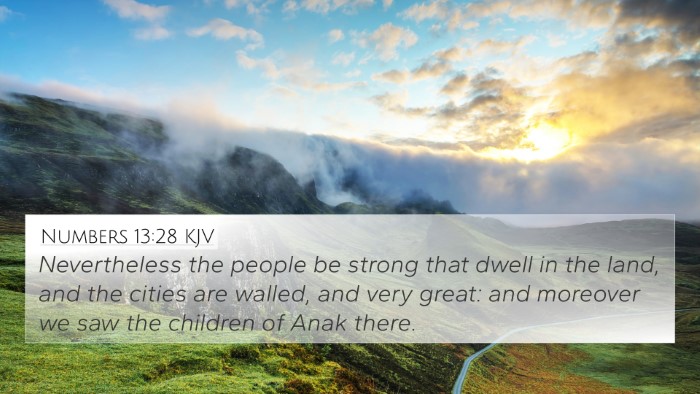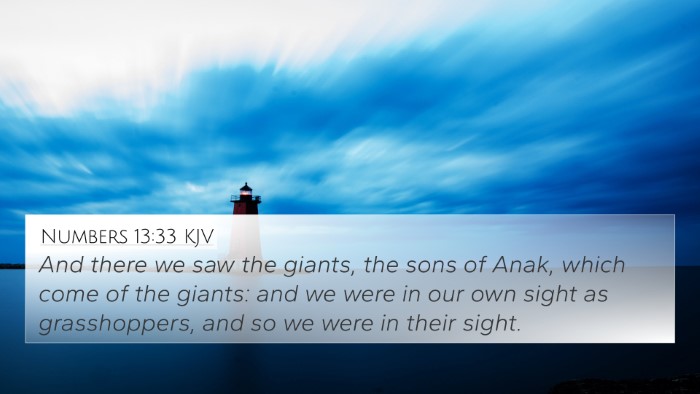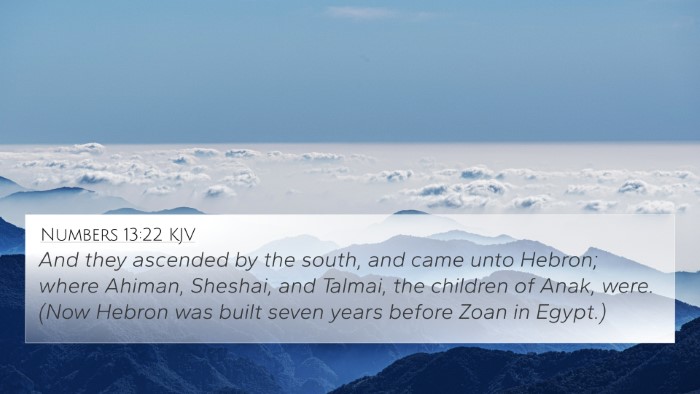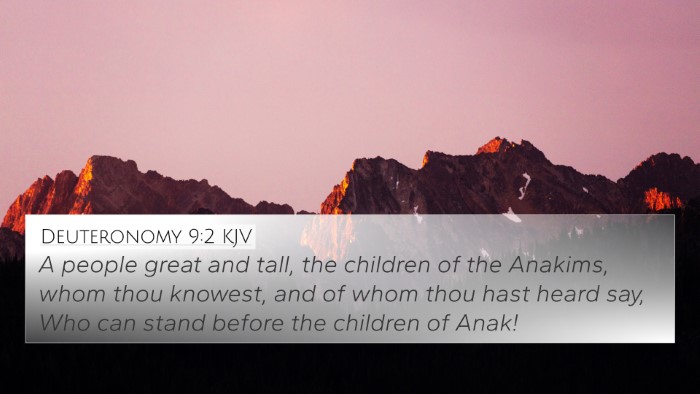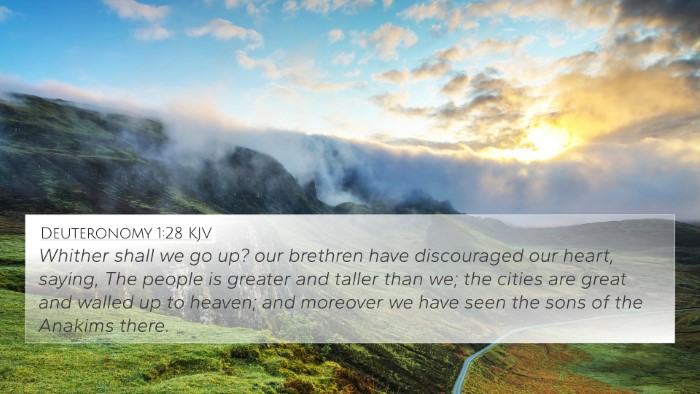Understanding Deuteronomy 2:11
Deuteronomy 2:11 states: "Which also were accounted giants, as the Anakims; but the Moabites call them Emims."
This verse presents a brief account of a group of people known as the Emims, who were considered giants, echoing the characteristics of the Anakims. Understanding this verse involves examining the cultural and historical context as well as its theological implications.
Historical Context
The Emims mentioned in Deuteronomy 2:11 were ancient inhabitants of the land that Israel was about to take. Their mention in this passage highlights God's promise to Israel concerning the land of Canaan and serves as a reminder of the giants they would face there.
Theological Significance
From a theological perspective, the identification of these giants serves as a symbol of the obstacles and challenges that believers face. This verse illustrates God’s sovereignty as He leads His people through trials.
Insights from Commentaries
-
Matthew Henry:
Henry emphasizes that the Emims and their formidable reputation are contrasted with God's power. He notes this serves as a reminder that no obstacle is insurmountable for those acting on God's behalf.
-
Albert Barnes:
Barnes provides insight into the etymology of the names and their meanings, suggesting that the ancients viewed these giants as fearsome. He argues that their mention acts as a lesson in faith and trust in God's provision.
-
Adam Clarke:
Clarke discusses the importance of understanding the land's history as Israel prepares to enter Canaan. He interprets the verse as a reminder of the historical inhabitants and God's promise to give Israel victory over them.
Cross-References in the Bible
To deepen your understanding of Deuteronomy 2:11, consider the following cross-references:
- Numbers 13:33: This verse recounts the Israelite spies mentioning giants in the land, linking the fear of the Emims to their experience.
- Joshua 12:4: Discusses King Og of Bashan, another notable giant, further connecting the theme of giants across the narrative.
- Genesis 6:4: Refers to the Nephilim, linking the idea of giants back to the pre-flood narrative.
- Deuteronomy 3:11: Mentions Og, illustrating God's victory over formidable enemies.
- 1 Samuel 17:4: Introduces Goliath, affirming the continuity of the 'giant' motif in biblical literature.
- Job 16:14: Uses the concept of overwhelming force in a poetic sense, echoing the presence of giants.
- Isaiah 26:14: Refers to the dead who shall not rise, possibly connecting to the fates of formidable enemies like the giants.
Connecting Themes
The concept of giants appears throughout Scripture and serves as a powerful motif representing various forms of opposition:
- Strength in Weakness: Throughout 2 Corinthians 12:9, Paul speaks of God's power being made perfect in weakness.
- Faith Over Fear: As seen in 1 John 4:18, love casts out fear, urging believers to confront their giants.
- Divine Assistance: Psalm 27:1 states that the Lord is our light and salvation, emphasizing reliance on God.
Tools for Deeper Study
Engaging with Scripture can be enriched by utilizing various resources:
- Utilizing a Bible concordance can aid in cross-referencing themes throughout the Bible.
- Cross-reference Bible study guides help in exploring connections between verses.
- Study methods such as thematic analysis can reveal deeper insights into verses like Deuteronomy 2:11.
Conclusion
In conclusion, Deuteronomy 2:11 serves as an important verse that highlights the biblical narrative's ongoing theme of giants and the trials that confront the people of God. By connecting this verse to others, we can glean a more profound understanding of the Scriptures and their relevance to our faith journey. Emphasizing cross-referencing allows us to see the interconnectedness of the biblical text, strengthening our study and interpretations.
